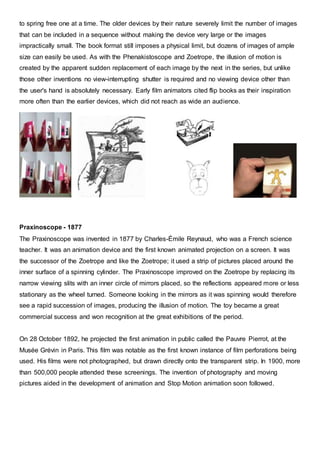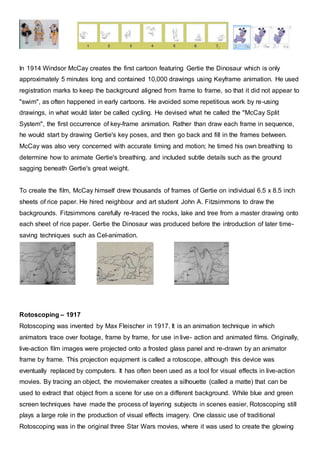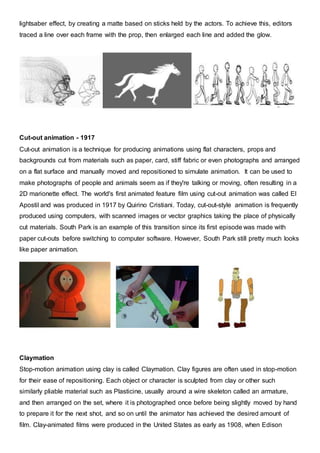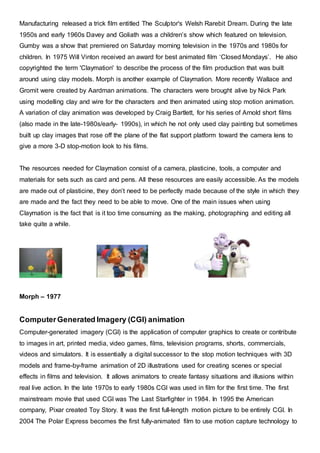This document provides a history of animation techniques from prehistoric cave paintings to modern computer animation. It describes early animation devices like the thaumatrope, phenakistoscope, and zoetrope which used persistence of vision to create the illusion of movement. Stop motion animation techniques were developed using puppets, models, and claymation. Keyframe animation allowed for more complex movements through the use of inbetweens. Other techniques discussed include rotoscoping, cut-out animation, and the first animated films featuring stop motion characters. The document traces the evolution of animation over thousands of years through these important innovations.













